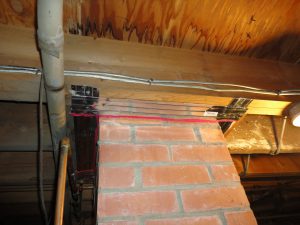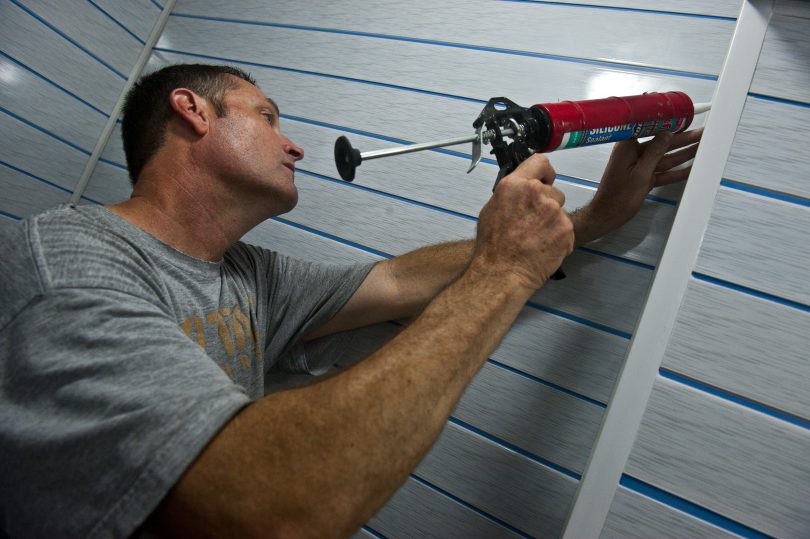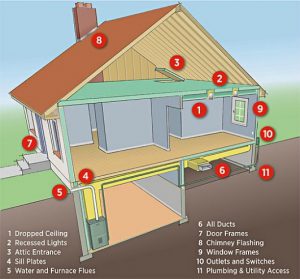Sealing air leaks is one of the easiest and most cost-effective improvements you can make in your home. Weather stripping doors and windows is a great first step and one that will likely pay for itself within a year. However, there are less obvious sources of air leakage that can cause significant discomfort in your home.
The average home leaks about half of its air every hour through various cracks and gaps. These air leak openings add up to a 2-foot square hole in the average home; that’s like having a window open all day, every day. Sealing your home can help keep heated and cooled air indoors, making your home more comfortable and reducing your energy bill.
While drafty windows and doors are obvious sources of air leakage, there are other places where air can escape and where moisture, pollen, dust and pests can seep in. For example, holes drilled into your walls, ceiling and attic for plumbing pipes and electrical lines can be a major source of air leakage. Outlet covers and recessed lights can also have small gaps where conditioned air can escape. Other sources could be leaks in air ducts in unheated spaces, fireplace chimneys and attic access hatches.
To find air leaks, you can start with a visual inspection, checking for gaps and cracks where air could escape. Walk around your home’s exterior and closely examine where different building materials meet, such as around the foundation perimeter, around outdoor water faucets and where the siding and the chimney meet. Indoors, examine common sources of air leakage, including electrical and water service entrances, baseboards, door and window frames and attic hatches.

Sealing gaps in chimneys requires special fire-resistant materials. Photo Credit: Simonson Management Services. https://flic.kr/p/neyE1M
Though a visual inspection can often identify the most obvious areas for improvement, a blower door test can give you the most thorough accounting of air leaks in your home. A blower door test is commonly performed during an energy audit. During this test, a powerful fan is mounted in the frame of an exterior door, pulling air outside of the house and lowering the air pressure inside. Then, the higher pressure air from outside of the house comes in through any unsealed openings, which the energy auditor locates, often using a smoke pen. Check with your electric co-op to see if they offer home energy audits.
Once you find the air leaks, the next step is to seal them up. The materials you need will depend on what gap is being sealed. Your co-op’s energy advisor, an energy auditor or your local hardware store can help guide you to the right products:
• Doors and windows with gaps at the frame need weather stripping.
• Small gaps, such as around outlets or between the baseboard and the floor, can be filled with caulk.
• Large gaps and holes, such as around pipes, may need foam insulation, foil insulation, sheeting or a combination of materials.

A blower door test can help you identify the air leaks in your home. Photo Credit: Tim Webb for Blue Grass Energy
You probably heard that your home needs some amount of air leakage to stay properly ventilated, which is true. A home that is too “tight” can have issues with too much interior moisture, as well as carbon monoxide risks if combustion appliances don’t have adequate ventilation. It is especially important that you not plug up vents that bring in outside air to a gas or propane furnace or stove.
Relying on uncontrolled air leaks instead of using mechanical ventilation is not a good idea. In cold, windy weather, your home will be drafty, but in warm, still weather, not enough air may come in, leaving you with air quality issues. An energy auditor can use a blower door test to ensure a healthy level of air infiltration for your home and, in the unlikely event that your home is too tight, recommend a good ventilation strategy.
This column was co-written by Pat Keegan and Amy Wheeless of Collaborative Efficiency.


